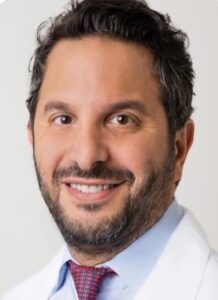 NEW YORK, NY, UNITED STATES, July 25, 2023/EINPresswire.com/ — Just because it’s called a stress test doesn’t mean it has to be stressful. A stress test is a relatively common diagnostic tool used to help doctors determine a patient’s risk of having cardiac problems, and it’s widely considered to be a safe procedure. So what should someone expect if they’re going to have a stress test? Dr. Robert Segal, founder of Manhattan Cardiology, has the answers.
NEW YORK, NY, UNITED STATES, July 25, 2023/EINPresswire.com/ — Just because it’s called a stress test doesn’t mean it has to be stressful. A stress test is a relatively common diagnostic tool used to help doctors determine a patient’s risk of having cardiac problems, and it’s widely considered to be a safe procedure. So what should someone expect if they’re going to have a stress test? Dr. Robert Segal, founder of Manhattan Cardiology, has the answers.
“A stress test is just a simple and non-invasive way to find out how someone’s heart and cardiovascular system responds to being put to work. It can provide a lot of information with very low risk to the patient,” said Segal.
For most people, a stress test is going to involve exercising while connected to monitoring equipment. The exercise takes the form of using either a treadmill or a stationary bicycle. In either case, the exercise starts at a low intensity and then becomes increasingly more difficult throughout the test, which lasts for about 10-15 minutes.“For people who are unable to exercise, either due to physical ability or already known conditions that preclude intense exercising, a medication can be used to simulate the effects of exercise on the heart. A stress test, with or without exercise, is always preformed at a medical facility under the guidance of a doctor or trained technician,” Segal said.
In some circumstances, some people will need a nuclear stress test (also called a thallium stress test). In these cases, the testing itself remains the same, but a radioactive tracer will be injected before the test in order to capture images of the heart before, during, and after the heart is put under stress.
To prepare for a stress test, the patient should share with their doctor all medications they are currently taking. This includes prescription medicine, over-the-counter (OTC) treatments, vitamins, and supplements. They may be asked to pause some or all of these medications prior to the test. Additionally, they may be asked not to eat or drink anything (except water) a few hours before the test.
Because the test involves exercise, it’s important to dress appropriately. Loose-fitting comfortable clothing such as sweats, track pants, or a breathable tee shirt are all good items to consider. For people who will be receiving medicine in place of exercising, wear a shirt that allows easy arm access so the intravenous line (IV) can be placed without difficulty.
Footwear should consist of well-fitting gym shoes, running shoes, or tennis shoes in good condition with closed toes and some amount of tread. Avoid sandals, flip-flops, heels, and boots.
“Once in the exam room, people can expect to have electrodes placed in their chest and arms. This is to measure the electrical activity of the heart. An inflatable cuff will be placed on one arm to monitor blood pressure. Sometimes patients will also be asked to breathe into a special tube to measure respiration,” Segal said.
Measurements will be taken at rest before the stress portion of the test begins in order to determine a baseline. Then measurements will be taken continuously during the stress portion of the test. Afterwards, measurements may be taken while the patient recovers.
Who needs to take a stress test?
“Stress tests are a tool, and they don’t need to be overused. They’re not recommended to be used ‘just in case’ as they may have been in the past. Stress tests are really for people who are exhibiting symptoms of a heart condition that still needs to be diagnosed or have a high risk for heart problems like coronary artery disease and would benefit from an immediate intervention,” said Segal.
He added that stress tests can also be used to determine if new medications or recent procedures are having the desired effect, or to find out in a safe environment if someone is healthy enough to begin vigorous exercise after a prolonged lapse.
The results of a stress test can be used to diagnose coronary artery disease, and may be useful for people with undiagnosed symptoms including chest pain and shortness of breath. The results can also help indicate someone’s risk level for future heart attacks or other related conditions.
“Of course, the results of a stress test might lead to other additional tests, but they still provide valuable diagnostic evidence to help direct future care. But in the meantime, after a stress test the patient can expect to go home and get on with their normal daily activities, and that makes it an invaluable tool,” said Segal.
Manhattan Cardiology is the premier facility for preventive cardiology in New York. Our cardiologists practice under the guiding principle that early detection is the best form of prevention. www.manhattancardiology.com
Dr. Robert Segal is a board-certified cardiologist and the founder of Manhattan Cardiology, Medical Offices of Manhattan and co-founder of LabFinder. www.manhattancardiology.com www.medicalofficesofmanhattan.com www.LabFinder.com
